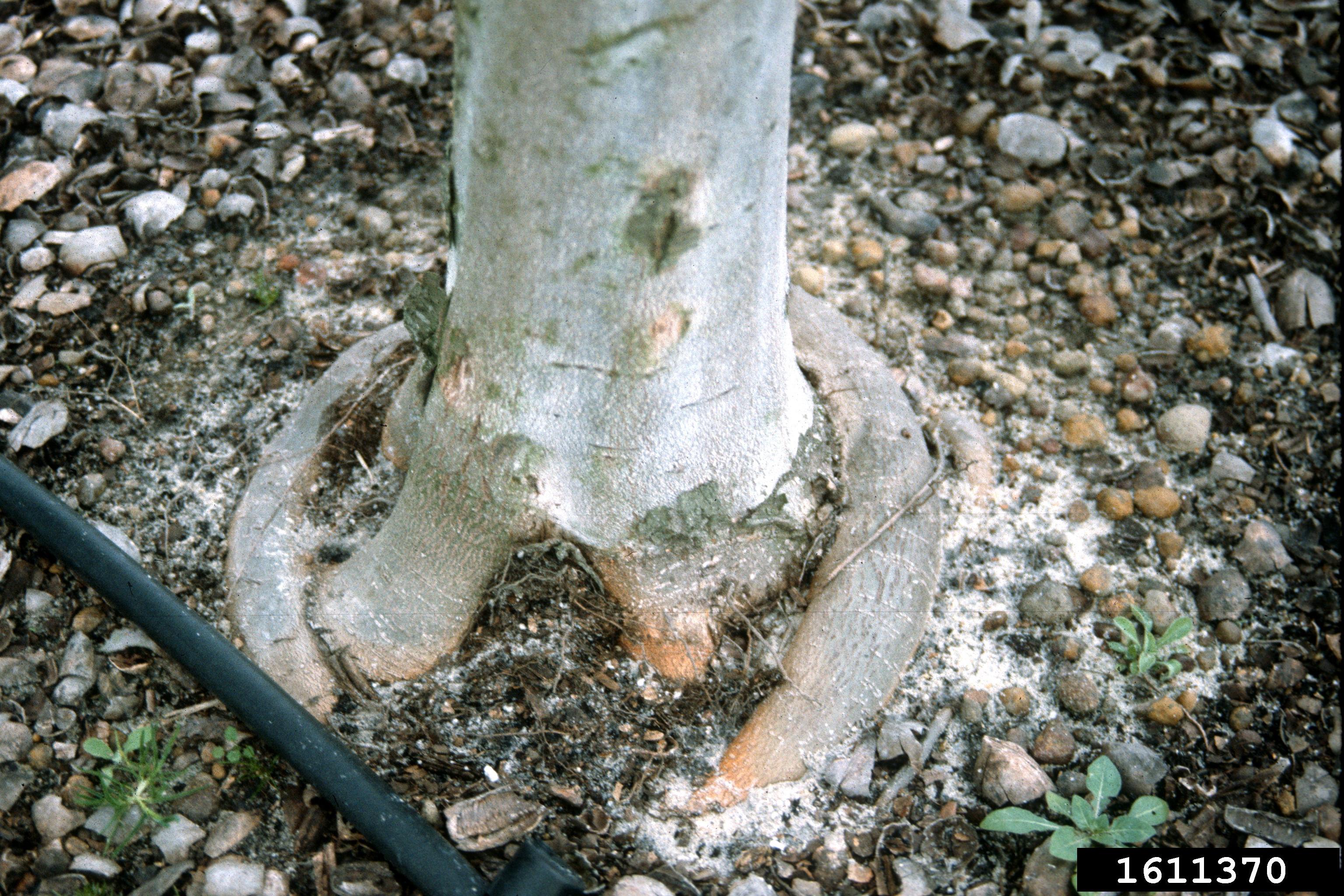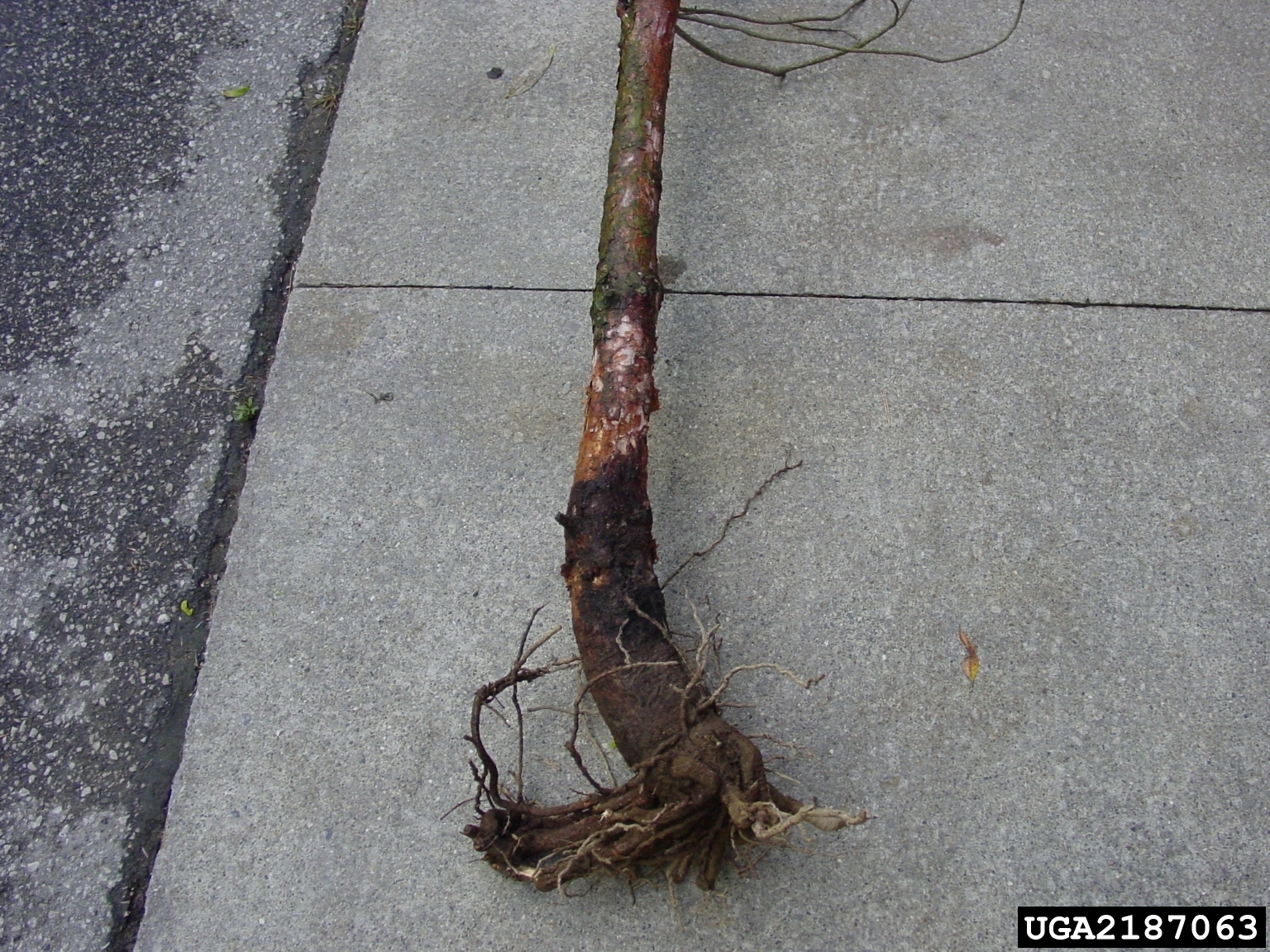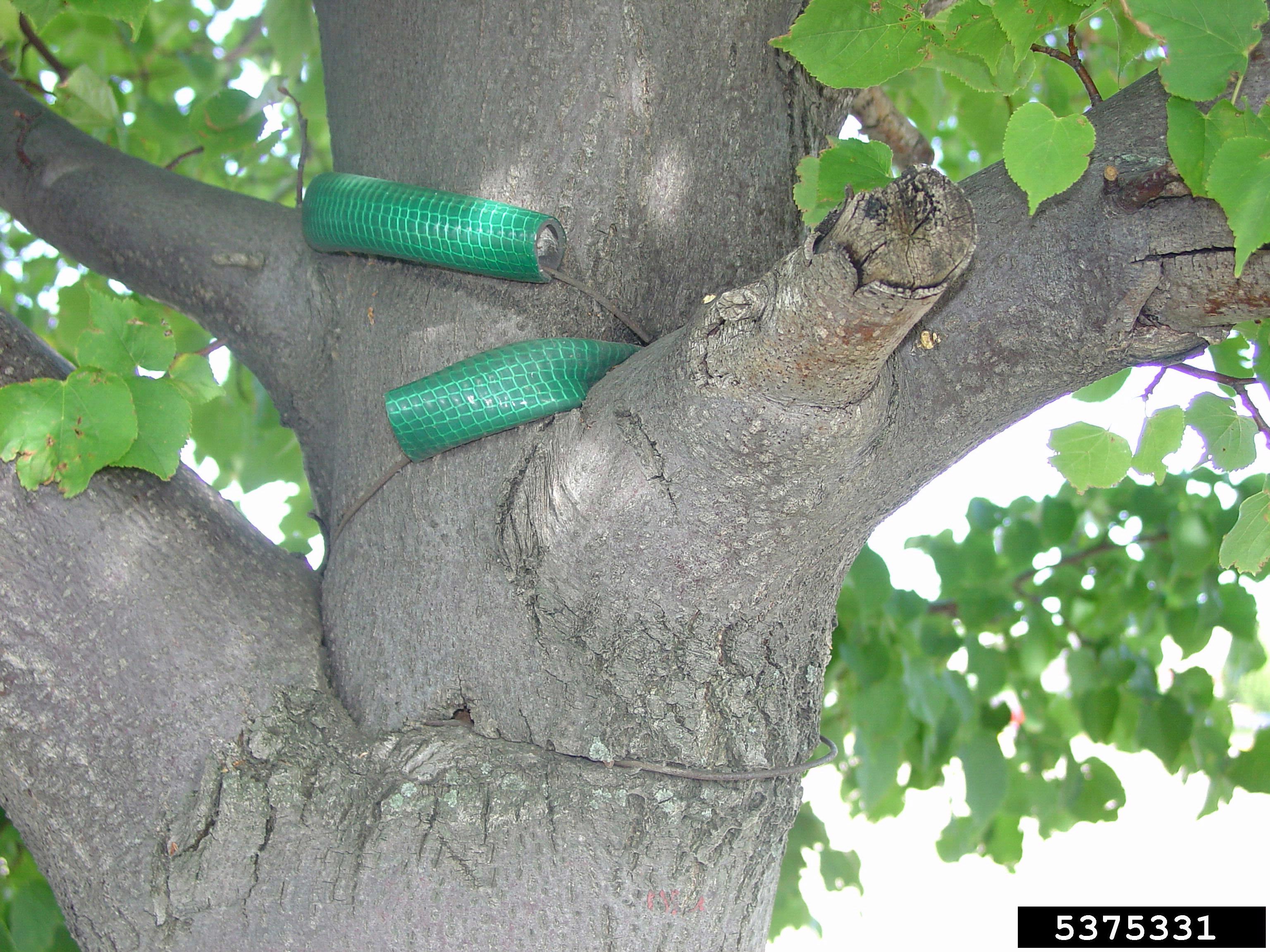 Tree Failures - September 30, 2020 Jeff Schalau, Agent, Agriculture & Natural Resources University of Arizona Cooperative Extension, Yavapai County Each year, I see ornamental trees die without any obvious cause. Insects and diseases cause their fair share of decline and mortality in trees. Environmental stresses (also called abiotic factors) can also cause tree decline and death. In north central Arizona, these factors are often sunscald, drought, temperature extremes, or nutrient deficiencies. Given the insects, diseases, and abiotic stressors, it might surprise many to learn human activities are responsible for about 90% of tree problems. Tree stress can be very dramatic and obvious but more often symptoms develop over longer periods of time and may not be easily recognized. Obvious stresses may include basal damage from a line trimmer or trunk damage from a lightning strike. More subtle stresses resulting from soil grade changes, soil compaction, or construction damage may not be immediately obvious. For example, when root systems are damaged by construction, soil compaction, or poor drainage, they cannot access adequate water, oxygen, and nutrients for the tree’s growth and survival. When trunks or stems are damaged, the carbohydrates move to where they are needed to repair damaged tissue. This can result in loss of vigor or death of roots or other growing points of the tree. When this occurs, the tree operates with decreased efficiency and in many cases, it begins a downward spiral of its growth functions. One common cause of tree failure is girdling roots. Here, roots begin to grow around the main stem of the tree and cut off or restrict the movement of water, plant nutrients and stored food reserves moving through the trunk. Trees with girdling roots often slowly weaken and die over a period of years or decades. I have seen many cases of girdling roots over the years. Most times, the problem has gone undetected until the tree breaks off at its base. To prevent this problem, purchase trees from a reputable source and inspect them for circling roots at planting time. Recent research is supporting the pruning away of circling roots at planting time. Better yet, try to ascertain this before purchasing the tree. Definitely avoid large trees in small pots that may be sold at reduced prices. Another common cause of tree failure is caused by digging the planting hole too deep and/or using organic amendments in the planting hole backfill. Research has demonstrated that containerized trees perform best when the planting hole is only as deep as the root ball and no organic soil amendments are added to the backfill. Deeper planting holes and organic soil amendments cause the root ball to settle allowing the root crown to sink below the soil surface. This puts excess moisture at the root crown and the tree succumbs to rot fungi. Improper tree staking also causes widespread damage to landscape trees. This damage can be caused by well-intentioned homeowners and landscape professionals. It is often avoidable. Damage occurs when the tree is left staked for too long allowing the ties to damage the trunk and limbs that rub on stakes causing mechanical injury. Even when insulated with garden hose, wire or cable ties can easily cause trunk damage. You should first assess whether a tree needs to be staked at all. By purchasing a smaller tree, you may avoid staking altogether. Conversely, larger, boxed trees may similarly not need staking (but it may be difficult to assess a larger tree for girdling roots). When a newly planted tree warrants staking, two sturdy tall wooden stakes driven into the native soil (outside the trees root ball) and perpendicular to prevailing winds will provide the best support. The tree can then be tied to the stakes using a range of tree tie designs. Tree straps with grommets appear to be one of the more tree friendly options for tying. After staking, cut the tree stakes off as to prevent damage to lower limbs. Leave as many branches as possible to allow the tree to develop maximum taper and remove stakes and ties within one year of planting (or sooner). Remember, tree staking is to stabilize the root ball allowing the young tree to develop roots that extend into the native soil. Well-placed, locally adapted trees are an asset to any landscape. They provide shade, energy savings, seasonal interest, beauty, and much more. Visit the online edition (URL below) for additional information. You can follow the Backyard Gardener on Twitter – use the link on the BYG website. If you have other gardening questions, email the Master Gardener Help Desk in Prescott (prescottmg@gmail.com) or Camp Verde (verdevalleymg@gmail.com) and be sure to include your name, location, and phone number. Find past Backyard Gardener columns or provide feedback at the Backyard Gardener web site: https://cals.arizona.edu/yavapai/anr/hort/byg/. Images  Roots that can potentially girdle a tree and cause it to fail (Photo by John Ruter, University of Georgia, Bugwood.org).
Roots that can potentially girdle a tree and cause it to fail (Photo by John Ruter, University of Georgia, Bugwood.org). This Scots pine was planted too deep. After a year or so the bark in contact with the soil rotted and the tree failed (Photo by Joseph LaForest, University of Georgia, Bugwood.org).
This Scots pine was planted too deep. After a year or so the bark in contact with the soil rotted and the tree failed (Photo by Joseph LaForest, University of Georgia, Bugwood.org). Staking was not adequately monitored and this tree now has wire and gridled areas where the wire has compromised the phloem under the bark constricting the flow of carbohydrates downward. This tree could snap-off at this location and will never be sound (Photo by Andrew Koeser, International Society of Arboriculture, Bugwood.org).
Staking was not adequately monitored and this tree now has wire and gridled areas where the wire has compromised the phloem under the bark constricting the flow of carbohydrates downward. This tree could snap-off at this location and will never be sound (Photo by Andrew Koeser, International Society of Arboriculture, Bugwood.org).Additional Resources Plant Selection and Selecting Your Plants, University of Arizona Cooperative Extension extension.arizona.edu/sites/extension.arizona.edu/files/pubs/az1153-2015.pdf Planting Guidelines: Container Trees and Shrubs, University of Arizona Cooperative Extension extension.arizona.edu/sites/extension.arizona.edu/files/pubs/az1022.pdf Staking and Guying Trees, University of Minnesota Extension extension.umn.edu/planting-and-growing-guides/staking-and-guying-trees |